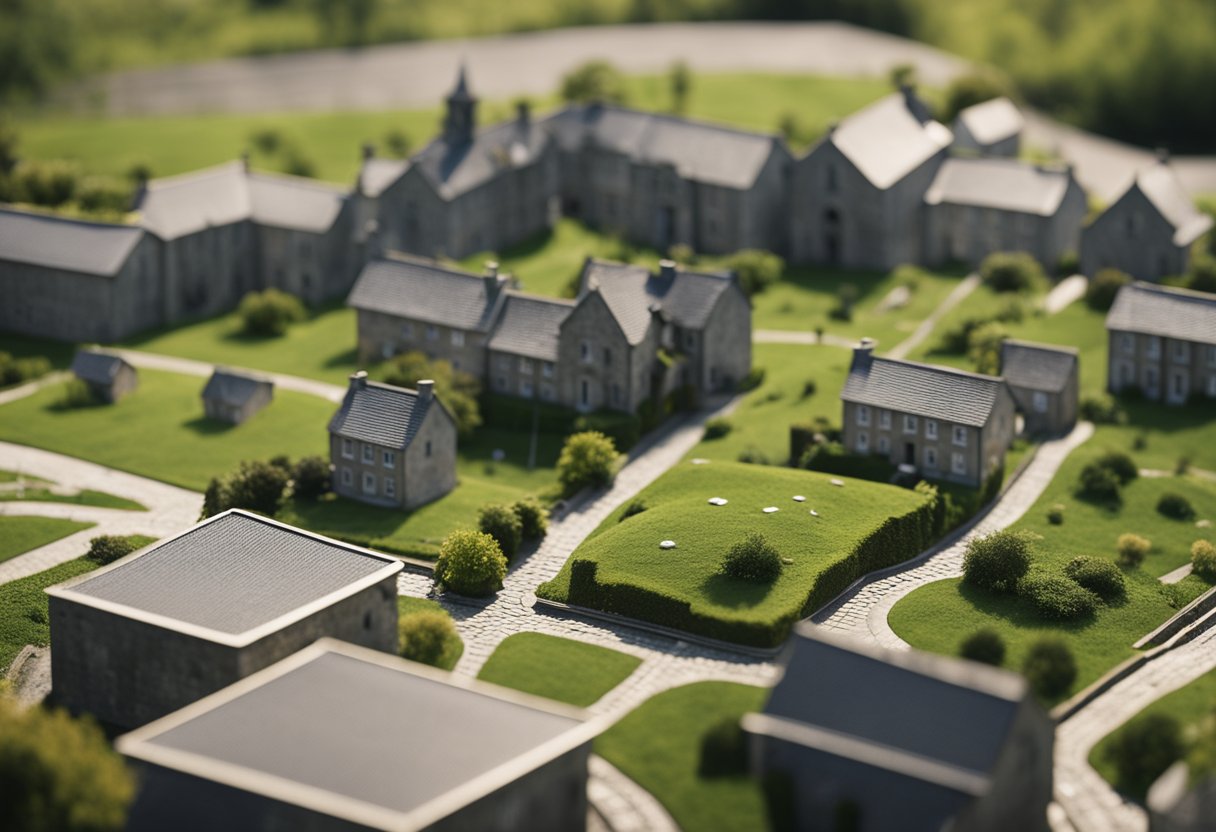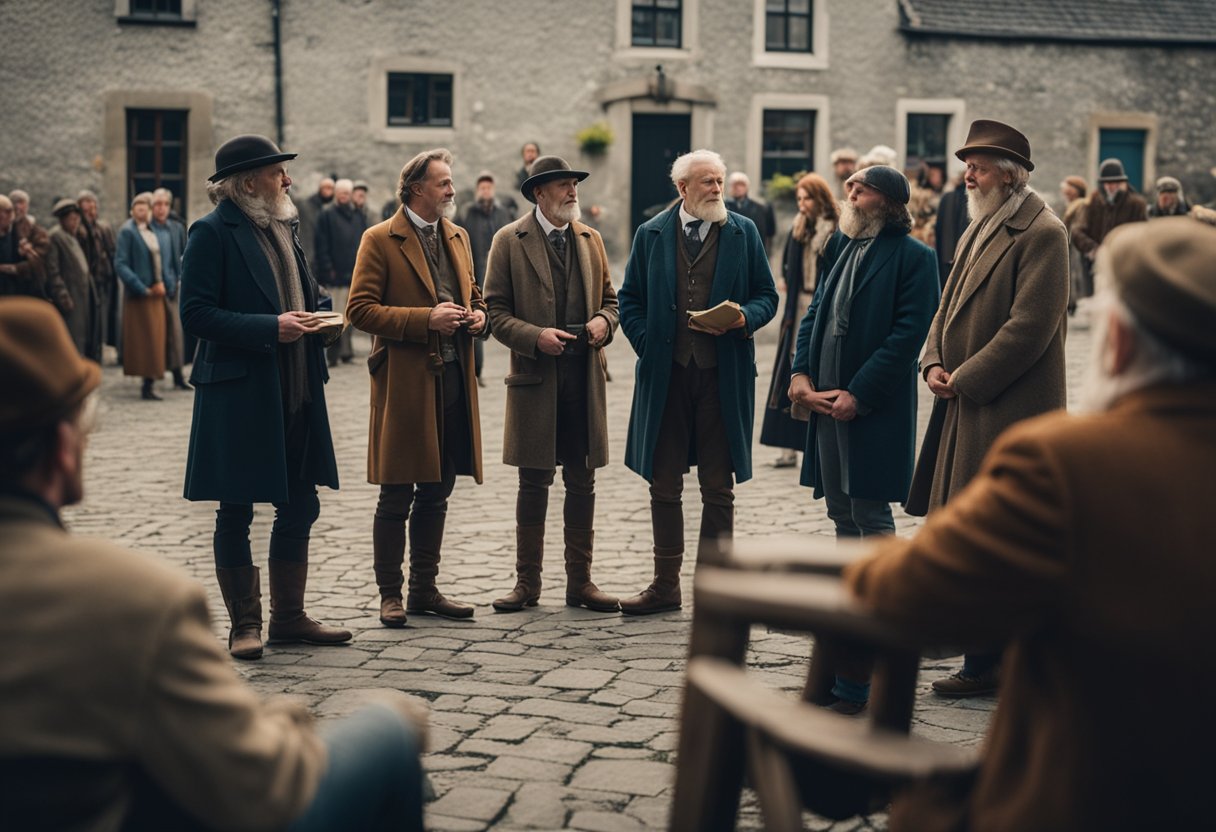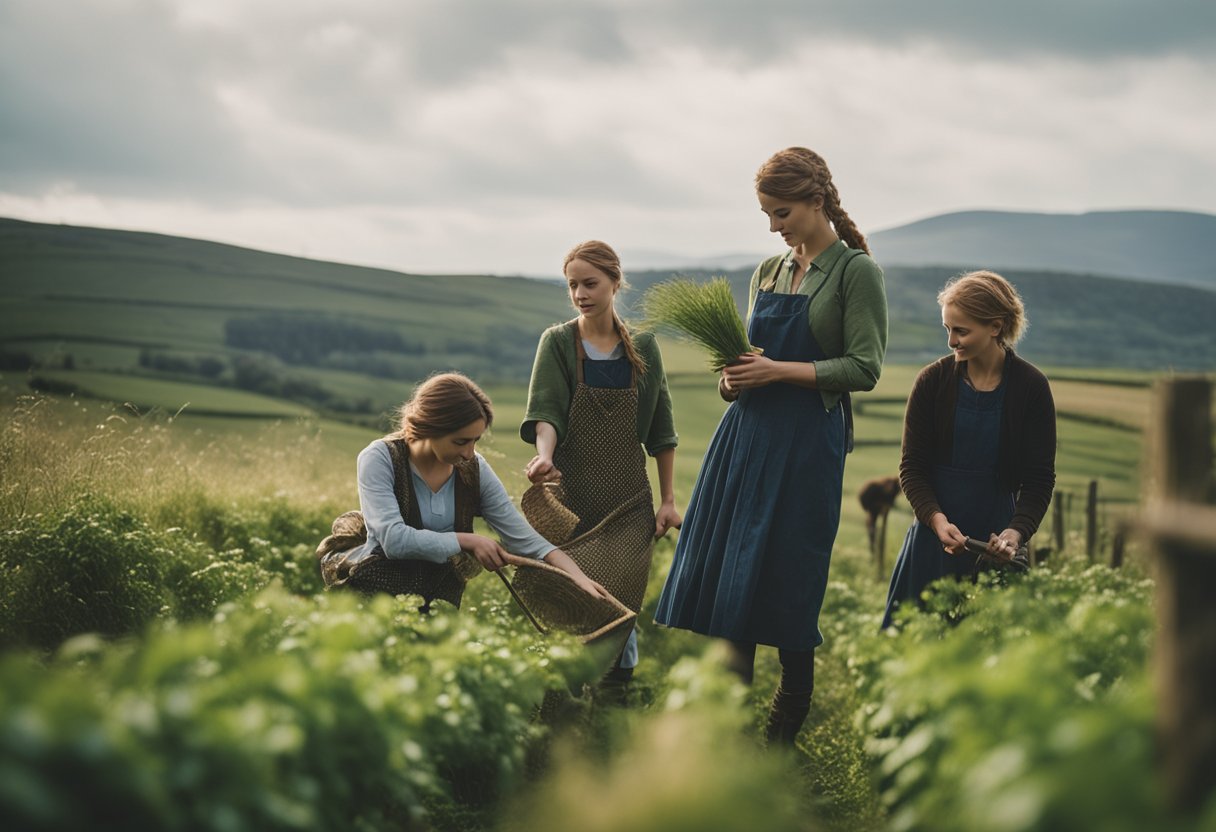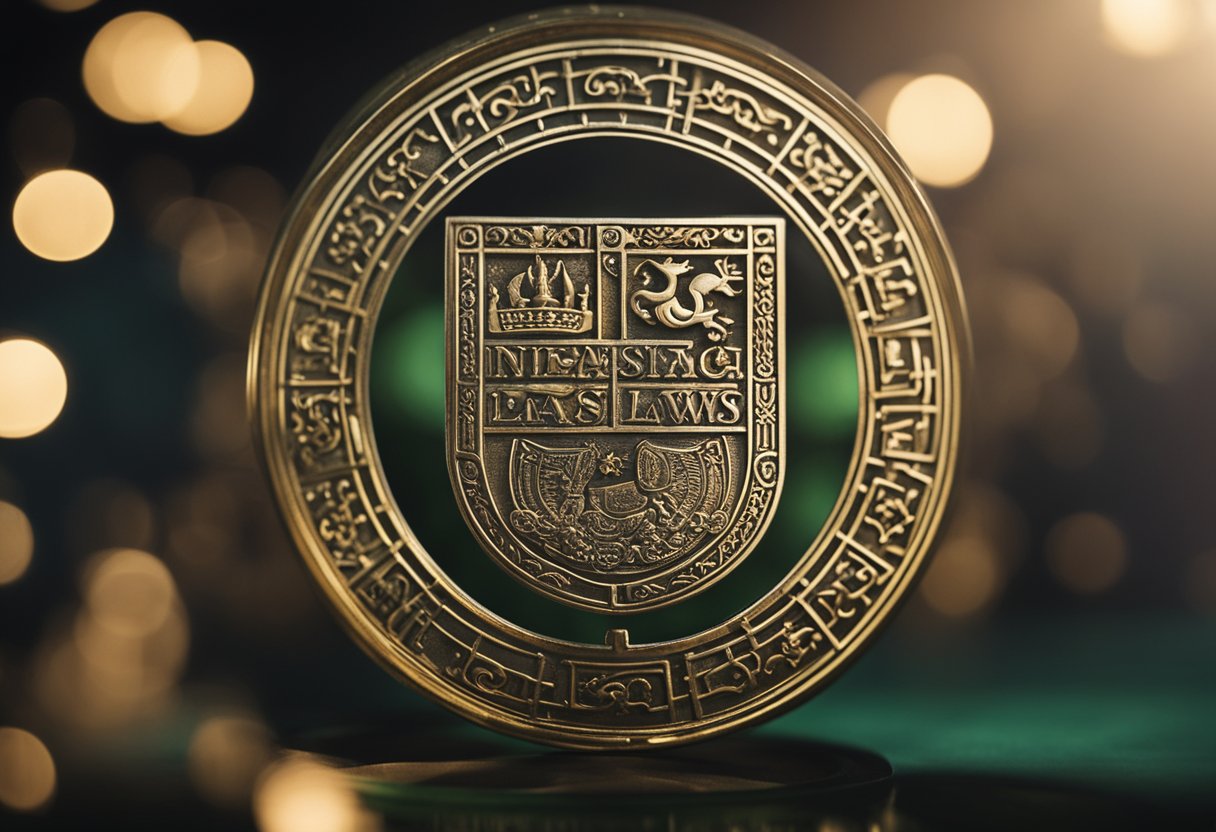Ancient Irish Laws and Their Societal Impact: Exploring Brehon Law Influence

Updated On: April 22, 2024 by Maha Yassin
The complex tapestry of Ancient Irish laws, widely known as Brehon law, is a cornerstone of pre-modern Irish society. These sophisticated legal codes, dating back to the early Christian period, provided a comprehensive framework for governance and social conduct in Ireland. The Brehon laws were remarkable for their detail and the equitable principles on which they were founded, impacting every aspect of Irish life, from property rights to personal conduct.
In Gaelic Ireland, the Brehon laws reflected a society deeply interconnected by kinship ties, honour systems, and communal responsibility. Legal practitioners, known as Brehons, exerted significant influence, serving as arbitrators and interpreters of the law. The Brehon laws uniquely understood human nature and fairness by balancing restorative justice with societal order. Their influence extended beyond mere regulation, permeating social values and shaping the cultural identity that Ireland would carry into successive generations.
Origins and Sources of Brehon Law
We’ll explore the ancient legal texts and the rich oral customs that form the foundation of Brehon Law, a pillar of Irish heritage and culture.
Brehon Manuscripts
Our initial focus is on the manuscripts that serve as the primary sources of Brehon Law. Most prominently, the Senchas Már represents a significant compendium of legal knowledge and practice. Legal scholars and practitioners pen these texts, encapsulating early Irish society’s intricate legal principles and judicial processes. From these meticulously crafted documents, mostly written in Old and Middle Irish, we derive a substantial understanding of this complex legal system.
Oral Tradition and Druids
In tandem with the written word, Brehon Law was profoundly intertwined with oral tradition. The Druids and subsequent legal figures known as Brehons played a paramount role in preserving and interpreting the law. These important figures utilised a rich oral tradition to convey legal principles and judgments, ensuring that Brehon Law was accessible to all layers of ancient Irish society. Brehon Law maintained a dynamic presence in the fabric of Irish life through the marriage of spoken word and written manuscripts.
Structure and Hierarchy of the Legal System
In Ancient Ireland, the legal system was complex and deeply interwoven with the fabric of society, reflecting the intricacies of social order and status.
The Role of Brehons
Brehons were the custodians of Brehon law, serving as judges and legal experts within the ancient Irish legal system. These individuals held a respected position due to their extensive knowledge and interpretation of complex laws. Their role extended beyond mere judicature; they acted as arbitrators and mediators, ensuring justice was met according to societal norms and legal precedents. Notably, Brehons were not appointed by a central authority but were chosen by local communities based on their expertise and fair judgment.
Social Stratification and Legal Rights
Social hierarchy plays a pivotal role in individuals’ legal rights and duties. There were clear distinctions between nobles and commoners, with laws outlining specific rights and responsibilities for each stratum. Nobility enjoyed privileges and had specific legal protections based on their rank and status, while commoners, though afforded fewer privileges, were not without rights. Justice under Brehon law was not one-size-fits-all; it was modulated by one’s social standing, with fines and compensation varying according to a person’s honour price, a value associated with their societal rank.
Key Principles Underpinning Brehon Laws
The Brehon Laws, predating many modern legal systems, centred around maintaining social harmony through restorative justice and balanced compensation. These principles sought to resolve conflicts by addressing the damage rather than punishing the offender.
Restorative Justice
At the core of Irish legal tradition, restorative justice was paramount. The objective wasn’t to inflict harm on the wrongdoer but to remedy the imbalance caused by the offence. Through this lens, guilt was addressed by obligations to heal rifts within the community.
Punitive Measures and Compensation
Punitive measures under the Brehon Laws often entailed financial compensation, known as éric. This enforced accountability and compensated victims, ensuring a tangible route back towards societal balance. This approach was flexible and sensitive to the context and the parties involved.
Legal Practice and Dispute Resolution

The Brehon laws offered a sophisticated dispute resolution system in ancient Irish society. This system hinged on the principles of restorative justice, aiming to repair harm and restore social harmony.
Trials and Witness Testimonies
We note that trials under the Brehon laws were not adversarial, as in modern courts. Instead, an arbitrator, known as a Brehon, facilitated a process whereby both parties could come to a resolution. The presence and testimonies of witnesses played a crucial role in these proceedings. Witnesses were expected to provide truthful accounts to aid the Brehon in delivering a fair judgement, with their social standing often reinforcing the credibility of their testimony.
Fines and Sureties
Fines, known as eric, were the most common form of resolution; they acted not as punitive measures but as a means to compensate victims and settle disputes. Sureties were integral to enforcing fines, as they guaranteed the payment of these obligations. This system of sureties provided a layer of accountability within the community, ensuring that the resolutions decreed by the Brehon were honoured and effectively maintained social order.
These practices underpin our understanding of the administration of justice within early Irish society and showcase the sophisticated legal mechanisms they employed in dispute resolution.
Property and Wealth Management in Gaelic Ireland

Property and wealth management were sophisticated systems pivotal to societal structure and justice in Gaelic Ireland, with specific laws governing land and chattels like cattle.
Land Ownership
Land ownership in Gaelic Ireland was communal rather than individual. It was the cornerstone of society and wealth, most commonly measured by the unit of the tuath, a local governance area containing several families. Although individual families worked the land, the ultimate ownership resided with the wider kin group, reflecting a collective approach to property. The land was not bought and sold in the modern sense; instead, it was held in trust by the chieftain for the clan. The Brehon Laws played a significant role in dictating land rights, stipulating a system of inheritance and succession while ensuring fair distribution amongst the clan members.
Cattle and Other Chattels
Cattle were the primary measure of wealth and movable property, vital for a household’s prosperity and status. The ownership and transfer of cattle were carefully legislated, with intricate legal rights and responsibilities laid out for damage or loss. Bees, another valuable chattel, had their legislation under the Brehon Laws, illustrating early Irish society’s detailed concern with managing and protecting property. These laws ensured wealth was commensurate with social rank and responsibilities, maintaining order and fairness within Gaelic society.
Family Law and Personal Status
In early Irish society, the Brehon Laws provided comprehensive guidelines regarding family law and personal status, addressing intricate aspects of marriage, divorce, kinship, and inheritance. These laws reflected the societal values and structure of the time, giving us insight into the central role of family and clan in ancient Ireland.
Marriage and Divorce
Marriage under the Brehon Laws was a contract-based union with considerations for property and social status. Various forms of marriage existed, and the laws accommodated multiple types of unions based on property and rank. Laws dictated that both parties had rights to the property and wealth accumulated during the marriage, and either party could initiate a divorce.
Upon dissolution of a marriage, the Brehon Laws outlined specific entitlements to the couple’s communal property. Notably, the woman typically retained her original dowry and any property she brought into the marriage.
Kinship and Inheritance
Kinship determined the intricate network of rights and duties within the clan. A person’s status, including legal rights and obligations, was closely tied to their kin group, the ‘derbfine’. This unit consisted of all male descendants of a common great-grandfather, indicating the importance of patrilineal descent in inheritance and kinship ties.
Inheritance under these laws favoured the male lineage, with property typically passing from father to son. However, provisions existed to accommodate various scenarios, including those without direct male descendants. In such cases, the wealth and property might be distributed among kin members.
Through our exploration of ancient Irish family law and personal status, we can notice the pragmatic approach of the Brehon Laws in dealing with the realities of marital relationships, kinship structures, and clan integrity. These laws present an intricate tapestry of early Irish society’s priorities and concerns, highlighting the significance of familial bonds in shaping individual and societal norms.
Status of Women and Gender Equality

In ancient Ireland, the Brehon Laws provided a complex framework that recognised women’s rights and outlined their societal status. Within this legal structure, women’s rights were explicitly addressed, often in ways that diverged from contemporary European norms.
Rights of Women
The Brehon Laws affirmed certain rights for women, including the entitlement to own property, the right to divorce, and protections against unjust treatment. It is noted that Irish women had the legal capacity to hold and transfer land, a contrast to the limitations faced by their counterparts in other regions. Some legal texts even suggest that women could engage in contracts and were entitled to compensation for personal injury, distinctly indicating a form of legal personhood which wasn’t universally afforded to women at the time.
Marital Provisions
Marriage in ancient Irish society operated under specific legal stipulations that governed property and personal freedoms. A woman’s status could be categorised within the legal system upon marriage. The Brehon Laws delineated various forms of marriage, each conferring different rights and duties. Notably, a woman’s consent was required for a marriage, indicating personal autonomy. Post-marital rights centred on property, and in the case of marriage dissolution, women retained individual rights that ensured a degree of security and independence.
In understanding the impact these laws had on gender equality, it’s evident that while the Brehon Laws created spaces for women’s autonomy and legal recognition, the application and enforcement of these rights would likely have varied greatly. Nonetheless, the presence of these provisions in the legal codices speaks to a societal intent that recognised women’s place within an intricate legal and social order.
Criminal Law and Societal Discipline
In ancient Irish society, the Brehon laws played a significant role in maintaining order through a unique system of punishment and compensation. These laws reflected a sophisticated understanding of the intricate relationships within the community, prioritising restorative justice over retributive actions.
Punishment and Rehabilitation
The Brehon laws favoured recompense and rehabilitation over corporal or capital punishment. In cases where a crime was committed, the offender was usually required to pay compensation, called an éraic, to the victim. This compensation was proportionate to the offended party’s status and the crime’s severity. Moreover, the Brehon laws aimed not just to punish but to restore the balance in society, ensuring that the wrongdoer could be reintegrated into society after making amends.
Crime and Status
Within the framework of Brehon law, the concept of status played a pivotal role in both the crime committed and the subsequent punishment. An individual’s standing in society, often linked to their family or clan, influenced the penalties issued. The law protected the rights of all members, even the unfree, and everyone was entitled to certain freedoms. This tiered legal structure highlights how deeply societal hierarchy influenced legal outcomes. For instance, the loss incurred by a noble was considered far greater and, thus, warranted higher compensation compared to that of a commoner.
Impact of External Influences on Irish Laws

Before the Norman invasion, Irish society was governed by a distinctive legal system known as Brehon Law. However, external influences, particularly from the Normans and, subsequently, English legislation, dramatically shifted the Irish legal landscape.
Norman Invasion
The Norman invasion in the 12th century marked a significant turn in Irish legal history. The Normans introduced a feudal system at odds with the existing Brehon Laws, which were based on a complex social hierarchy rooted in kinship and property. As the Normans established their control areas, they imposed feudal laws that began to exist alongside indigenous laws. This led to a bifurcated legal system where Norman law was applied in Norman-controlled territories, and Brehon Law persisted in Gaelic areas. However, the Normans’ impact was not uniform, with some Gaelic regions adopting aspects of Norman law.
English Legislation
The influence of English legislation became more pronounced following the Tudor conquest of Ireland in the 16th century. The introduction of the ‘Surrender and regrant’ policy by Henry VIII aimed to extend English control over Irish lands and assimilate the Gaelic nobility into English customs and law. Irish chiefs surrendered their lands to the King through this policy, only to have them regranted under English terms. This undermined Brehon Law’s authority and laid the foundation for the widescale imposition of English Common Law, fundamentally altering the Irish legal system. By the 17th century, English law had largely supplanted the Brehon Laws, especially after the Cromwellian conquest of Ireland and the subsequent penal laws which sought to restrict the rights of the Irish Catholic majority.
Decline and Legacy of Brehon Laws
The Brehon Laws, once the cornerstone of Irish legal and social order, encountered gradual displacement following the English imposition of their legal system and experienced a complex reevaluation in later centuries.
Displacement by English Law
With the Anglo-Norman invasion in the 12th century, English law began to gain prominence in Ireland, particularly after events like the establishment of the Lordship of Ireland. The Brehon Laws progressively lost their influence as English legal practices were implemented, especially after the 16th century’s crucial Flight of the Earls event, signalling a decline in traditional Gaelic aristocracy. By the 17th century, the native Irish legal system had largely been supplanted.
Cultural and Scholarly Reassessment
Despite its decline, the Brehon Laws’ legacy endures, forming a significant part of Ireland’s cultural heritage and national identity. Post-independence, there has been a resurgence of interest in these ancient statutes. Scholarly studies have been dedicated to exploring the intricacies of the laws, reflecting a recognition of their role in understanding Ireland’s past. Through revisiting Brehon Laws, we reconnect with a pivotal element of our nation’s foundation and contribute to the ongoing narrative of our cultural legacy.
Frequently Asked Questions
We’ve compiled some of the most commonly asked questions to help illuminate the significant aspects of Ancient Irish laws and their influence on society.
How did the Brehon laws influence daily life in ancient Ireland?
The Brehon laws deeply permeated everyday life in ancient Ireland, covering various civil matters from marriage and divorce to property rights, thus shaping the Irish people’s daily interactions and societal norms.
What were the primary social structures governed by ancient Irish laws?
Ancient Irish laws governed various social structures, including kinship groups, the class system, and professional guilds, which remained integral to the underlying social framework of early Irish society.
In what ways did the Penal laws affect Irish culture and religion?
The Penal Laws had profound impacts on Irish culture and religion, primarily by discriminating against and marginalising the Catholic majority and non-conforming Protestants, which led to cultural suppression and religious persecution.
How did hospitality laws under Brehon law reflect Irish society’s values?
Hospitality laws under Brehon law indicated the high value placed on generosity and hospitality in Irish society, considering these virtues essential for maintaining social harmony and community bonds.
What were the lasting impacts of ancient Irish legal systems on modern Irish law?
Ancient Irish legal systems have left an enduring legacy on modern Irish law, influencing the country’s contemporary legal principles, particularly restorative justice and community-based resolutions.
Could you provide detailed examples of how ancient Irish laws dealt with property and ownership?
Ancient Irish laws detailed specific protocols for property and ownership, including intricate inheritance laws and the recognition of individual and communal land usage rights, which were essential in agrarian societies.






